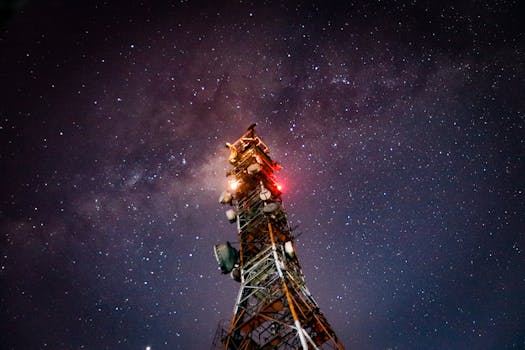
MEO Satellites: Revolutionizing Global Communication with Medium Earth Orbit Technology – MEO Satellites
MEO satellites, or Medium Earth Orbit satellites, are a type of satellite that operates at an altitude of approximately 2,000 to 36,000 kilometers above the Earth’s surface. This orbit is higher than Low Earth Orbit (LEO) satellites but lower than Geostationary Orbit (GEO) satellites. MEO satellites have gained significant attention in recent years due to their unique characteristics, which make them ideal for various applications, including navigation, communication, and Earth observation.
The use of MEO satellites has revolutionized the way we communicate globally, providing faster and more reliable connections. With the increasing demand for satellite-based services, MEO satellites have become a crucial component of modern telecommunications infrastructure. In this article, we will explore the world of MEO satellites, their benefits, and their applications.
How MEO Satellites Work
MEO satellites work by transmitting and receiving signals to and from Earth-based stations. They are equipped with transponders, which are devices that receive signals, amplify them, and then re-transmit them back to Earth. The satellites are also equipped with antennas, which are used to transmit and receive signals. The signals are transmitted to the satellite through an uplink, and then the satellite transmits the signal back to Earth through a downlink.
MEO satellites have several advantages over other types of satellites. They have a larger footprint than LEO satellites, which means they can cover a wider area. They also have a lower latency than GEO satellites, which means that signals take less time to travel to and from the satellite. This makes MEO satellites ideal for applications that require real-time communication, such as voice and video calls.
Applications of MEO Satellites
MEO satellites have a wide range of applications, including navigation, communication, and Earth observation. One of the most significant applications of MEO satellites is in the field of navigation. The Global Positioning System (GPS) is a network of MEO satellites that provides location information to GPS receivers on the ground. The system consists of a constellation of 24-32 satellites, which are orbiting the Earth at an altitude of approximately 20,000 kilometers.
MEO satellites are also used for communication purposes, such as providing internet connectivity to remote areas. They can offer faster and more reliable connections than traditional fiber-optic cables, making them ideal for areas where infrastructure is limited. Additionally, MEO satellites can be used for disaster recovery and emergency response, providing critical communication services during times of crisis.
Another significant application of MEO satellites is in the field of Earth observation. They can be used to monitor the environment, track weather patterns, and detect natural disasters. MEO satellites can also be used for agricultural monitoring, forestry management, and urban planning.
Benefits of MEO Satellites
MEO satellites have several benefits that make them an attractive option for various applications. One of the most significant benefits is their ability to provide global coverage. MEO satellites can cover the entire Earth, providing services to remote and underserved areas. They also have a lower latency than GEO satellites, making them ideal for real-time communication applications.
MEO satellites are also more cost-effective than traditional fiber-optic cables. They can provide internet connectivity to remote areas at a lower cost than laying fiber-optic cables, making them an attractive option for areas where infrastructure is limited. Additionally, MEO satellites can be used to provide backup services during times of crisis, such as natural disasters or network outages.
In conclusion, MEO satellites are revolutionizing the way we communicate globally. With their unique characteristics and benefits, they have become a crucial component of modern telecommunications infrastructure. As the demand for satellite-based services continues to grow, MEO satellites will play an increasingly important role in providing faster and more reliable connections to people around the world.
Future of MEO Satellites
The future of MEO satellites looks promising, with several new constellations and services being launched in the coming years. One of the most significant developments is the launch of the O3b constellation, which will provide high-speed internet connectivity to remote areas. The constellation will consist of 20 satellites, which will be launched in the next few years.
Another significant development is the launch of the OneWeb constellation, which will provide global internet connectivity. The constellation will consist of 648 satellites, which will be launched in the next few years. The service will provide high-speed internet connectivity to remote areas, making it an attractive option for areas where infrastructure is limited.
In conclusion, MEO satellites are transforming the way we communicate globally. With their unique characteristics and benefits, they have become a crucial component of modern telecommunications infrastructure. As the demand for satellite-based services continues to grow, MEO satellites will play an increasingly important role in providing faster and more reliable connections to people around the world.



